Imagine walking into a Whole Foods, grabbing your usual almond milk and avocados, and by the time you leave, you’re getting ads on your phone for sales on plant-based snacks.
Coincidence? Not quite. Welcome to the world of audience data, where big brands seem to know what you want before you even do.
On episode 540 of the "Delivering Marketing Joy" podcast, Adam Ortman reveals what he calls the “dirty little secrets” of marketing. He shows how even small businesses can level the playing field using audience data ethically.
The podcast is 11 minutes well spent, but if you’d prefer an even quicker read on how to use audience data to influence behavior, this post is for you. Keep reading to learn more.
What Is Audience Data?
Before we get too deep, let's talk about audience data. This is essentially information collected about consumers' behavior and preferences, allowing companies to tailor messaging and experiences. Think of it as the GPS for your marketing strategy, making sure your efforts land where they’ll be most effective.
Audience data leverages everything from the articles someone clicks on to the stores they visit. Technology enables businesses to study these actions and serve highly targeted ads.
Sure, it’s a little freaky, but when used thoughtfully, it’s also incredibly powerful. For example, that promotion you saw on Instagram just for walking into Whole Foods? That’s location-based audience targeting in action.
These hyper-targeted ads, though immensely effective, toe an ethical line. It’s one thing to personalize content; it’s another to make customers feel like they’re starring in a marketing version of "Black Mirror."
The Power of Audience Data
When used strategically, audience data offers several game-changing benefits. Here’s how it’s giving big brands (and, increasingly, small businesses) a significant edge:
1. Efficiency in Ad Spend
Gone are the days of blindly throwing ads out there, hoping they stick. Audience data guarantees your message reaches the right people at the right time. This isn’t just great for ROI, but is also a lifesaver for those of us (which, let’s face it, is most of us) working with tight budgets.
2. Enhanced Personalization
Consumers expect personalization. When your ad speaks directly to someone’s preferences or behavior, the connection is instant. That’s why tailored campaigns often have higher click-through and conversion rates. Just ask Netflix, which has turned personalization into an art form.
3. Competitor Proofing
Working within crowded markets, like e-commerce, can feel like an uphill battle. Audience data helps brands understand their customers better than the competition does, enabling them to offer value in ways that resonate deeply.
Ethical Marketing and Audience Data
Not everything in the world of “influencing consumer behavior” is as innocent as it sounds. Collecting and using consumer data raises ethical concerns, especially when there’s a lack of transparency.
Ethical marketing shouldn’t just be about staying compliant; it should be about building trust. For anyone leveraging audience data, here are two key guidelines:
-
Show empathy for your audience. Resist overselling. Instead, focus on how your product genuinely solves customer problems.
-
Ask for input. Customer surveys are a goldmine for insights. Tools like Google Forms or Mailchimp make it easy to collect feedback on preferences, media habits, and pain points.
And remember: ethical doesn’t mean less effective. It just means being responsible with the trust customers place in you.
Making Audience Data Work for Small and Mid-Sized Businesses
If you're reading this and thinking, "Well, this all sounds wonderful for the Nikes and Amazons of the world, but my small business isn’t exactly sitting on a treasure trove of data," don’t worry.
Big brands may have bigger analytics budgets, but with some savvy strategy, SMBs can still compete.
Here are a few actionable tips:
1. Start with Basic Research
Understand who your audience is. Even something as simple as a well-timed Facebook poll or a quick survey can reveal tons of insight.
2. Use Affordable Tools
Free or budget-friendly options like Google Ads and Facebook Audience Insights can help you build and target customer profiles without breaking the bank.
3. Learn from the Experts
YouTube is packed with tutorials on leveraging data for marketing. Invest some time to refine your future campaigns. Look for channels that focus on small business strategies for practical, relatable advice.
Avoiding Common Pitfalls in Data-Driven Marketing
Like any tool, audience data can be powerful in the right hands and disastrous in the wrong ones. Here are some common mistakes and how to dodge them:
Wasted Ad Spend
Poor targeting can lead to irrelevant ads. An extreme case? Running English-language ads to a predominantly Spanish-speaking audience. Avoid this by segmenting your audience properly before launching campaigns.
Generic Messaging
If your messaging feels like it’s meant for everyone, it will resonate with no one. Instead, lean into personalization. Craft empathetic, tailored messages that make your audience feel understood.
Even in the small-business space, simple segmentation and feedback cycles can refine your approach and keep mistakes at bay.
The Takeaway
Audience data isn’t just for global corporations with deep pockets; it’s a tool any business can wield with the right mindset and strategy. By tailoring ads, messages, and services to fit your audience, you’re not just marketing; you’re building relationships that last.
To dig even deeper into the nuances of audience targeting, give the “Delivering Marketing Joy” podcast episode with Adam Ortman a listen. While you’re at it, take the next step and explore how Kinetic319 can transform your marketing efforts.
Discover and empower your marketing strategy with Kinetic319. Get started today!

